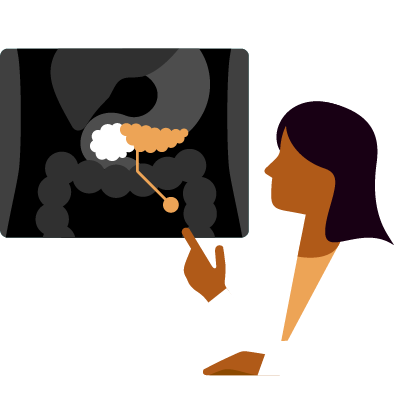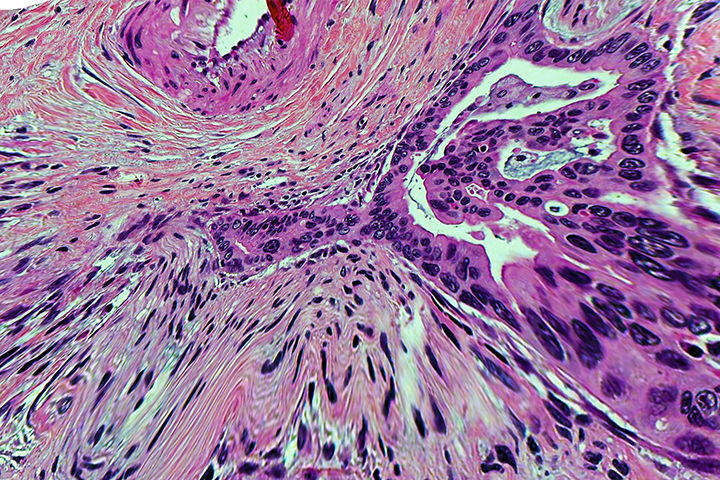Diagnosing Pancreatic Cancer: Tests to Expect

Pancreatic cancer is sneaky.
Unlike most cancers, which sound alarm bells during standard screening exams, pancreatic cancer often creeps up without warning.
“Most cancers go through a progression that includes precancerous changes,” says Gobind Anand, M.D., a gastroenterologist at the UC San Diego Health. “With colon cancer, precancerous polyps can be detected and removed during a routine colonoscopy. Pancreatic cancer also has precancerous lesions, but we don’t have a great way to identify them.”The end result: People who have pancreatic cancer often don’t realize they have the disease until it’s at a later stage and more difficult to treat.
Testing for Pancreatic Cancer
Since doctors don’t have a great way to screen for precancerous lesions in the pancreas, most people don’t realize they have pancreatic cancer until it has spread to other organs. It’s at these later stages when you begin noticing symptoms like jaundice, rib pain, and unexplained weight loss. Additionally, Anand notes that “another symptom we sometimes see is sudden onset diabetes, particularly among people who do not have risk factors for diabetes and are otherwise fit and healthy.”
To get an official diagnosis, doctors will take a complete medical history and examine you for signs of pancreatic cancer (sometimes pancreatic cancer can cause your liver and gallbladder to swell, and the whites of your eyes to yellow). Then, depending on your physical exam, your doctor may run one or more of the following tests:
- Blood tests: With laboratory tests, doctors may look for elevated liver enzymes and/or a tumor marker called CA 19-9, which is associated with pancreatic cancer.
- Computed tomography (CT): A CT scan takes detailed cross-sectional images of your body. When used with contrast dye, doctors can easily visualize the pancreas, as well as other organs and lymph nodes.
- Endoscopic ultrasound (EUS): With EUS, doctors insert an endoscope (a thin, flexible tube with a tiny video camera on the end) into your mouth and through the esophagus, stomach, and duodenum. A small ultrasound probe at the tip of the tube emits high-frequency sound waves to capture detailed images of the chest, digestive tract, pancreas, bile ducts, and liver.
While these are not the only available tests for pancreatic cancer screening, they tend to be doctors’ top choices. Other, less sensitive options include magnetic resonance imaging (MRI) and abdominal ultrasound. More sensitive options include:
- Endoscopic retrograde cholangiopancreatography (ERCP): For this test, doctors pass an endoscope down the throat, through the esophagus and stomach, and into the first part of the small intestine. X-rays taken through the endoscope can show narrowing or blockage in the bile ducts that might be due to pancreatic cancer. Unlike standard imaging exams, ERCP allows doctors to remove cells for a biopsy and/or to place a stent to keep a duct open.
- Magnetic resonance cholangiopancreatography (MRCP): This noninvasive MRI of the pancreas uses a high-powered magnetic field, radio waves, and a computer to evaluate the pancreas and pancreatic duct for disease, as well as the liver, gallbladder, and bile ducts.
- Percutaneous transhepatic cholangiography (PTC):In this procedure, the doctor places a hollow needle through the skin of the abdomen and into a bile duct within the liver. The doctor injects contrast dye through the needle and takes x-rays as it passes through the bile and pancreatic ducts. As with ERCP, this approach allows doctors to take fluid or tissue samples for biopsy and/or to place a stent to keep a duct open.
Should You Get Screened?
Health authorities, including the American Cancer Society, do not recommend pancreatic cancer screening for the general population. However, people who have certain genetic mutations (BRCA1, BRCA2, STK11, CDK2NA, PRSS1 and Lynch syndrome, among others), and those who have two or more blood relatives with the disease may benefit from annual pancreatic cancer screening.
Pancreatic cysts are another risk factor. These are often found during a scan for something else. People with pancreatic cysts may also benefit from annual screening.
If you fall into a high-risk category, your doctor may suggest taking steps to reduce your risk, such as:
- Avoid tobacco
- Maintain a healthy weight
- Reduce stress
They might also suggest annual screening exams. According to Anand, high-risk patients often alternate between EUS and MRCP on an annual basis. So one year you would do an MRCP and the next, an EUS. Unfortunately, both of these tests can result in false positives.
While it’s alarming to hear that you have a cyst or some other abnormality that needs to be watched, these screening exams offer the best odds of finding pancreatic cancer early, when it’s most treatable.






